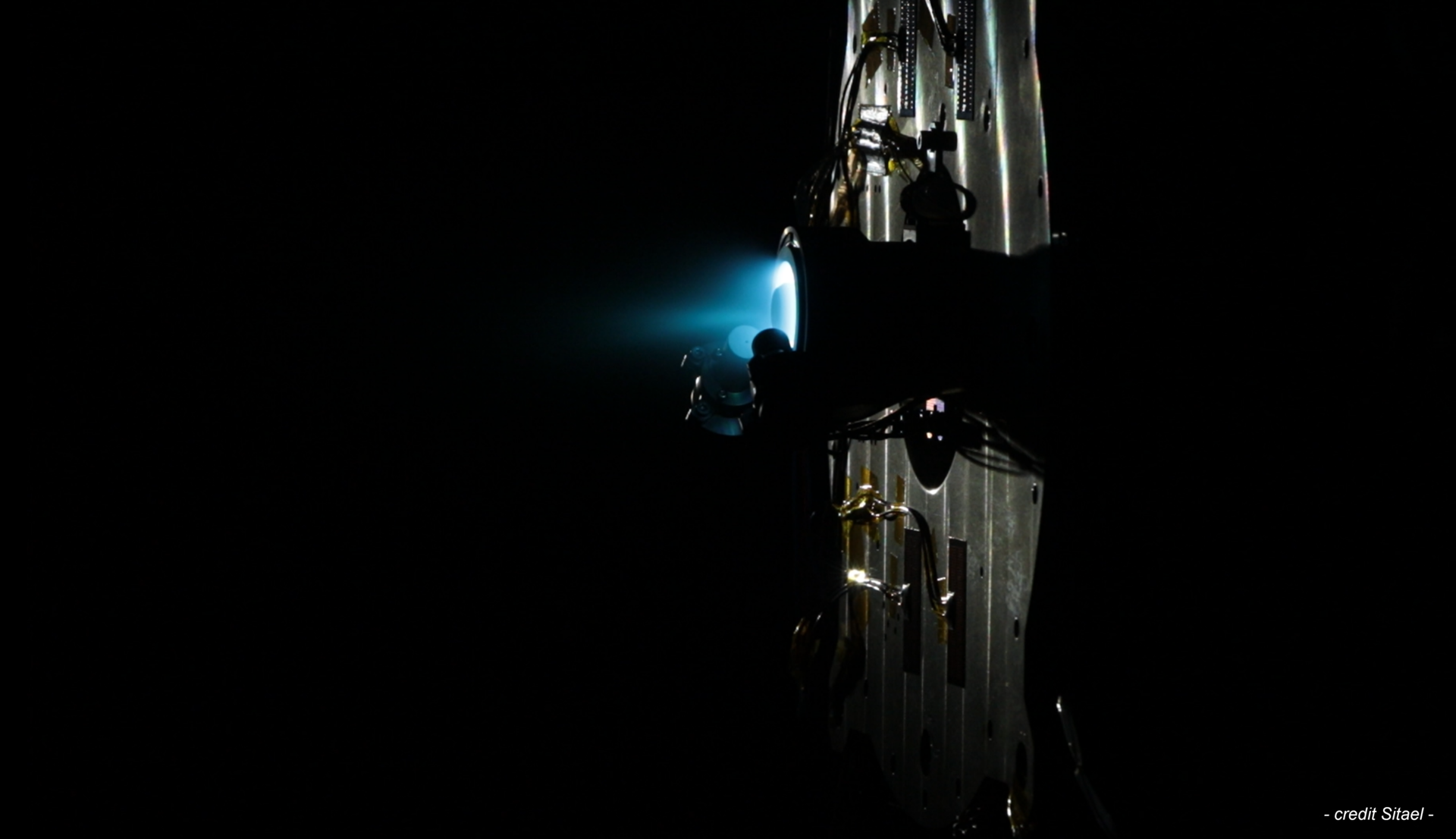27/06/2023
888 views
30 like
An innovative compact electric propulsion system recently completed its extended qualification firing test campaign in space-representative vacuum and temperature conditions, leaving it ready for deployment aboard the ESA-supported μHETSat technology demonstration microsatellite mission, scheduled launch at the end of this year.
µHOT
Developed by Sitael in Italy, the HT100 low power electric propulsion system centers around a small size and low power Hall Effect Thruster, capable of generating up to 6 millinewtons of thrust by accelerating ionised propellant particles through a magnetic field . Because of their high efficiency, Hall Effect Thrusters are widely used aboard geostationary and low-Earth orbit satellites for the purposes of maintaining orbit, increasing mission lifetimes, and enabling flight formation for constellations .
“Electric thrusters are very complex systems in themselves, involving almost every discipline one can imagine, and it took the team about a year and a half to optimize the design.” commented Stefano Santandrea, Head of ESA’s Small Satellite Platform Unit, which supports µHETSat.
Sitael vacuum chamber
“The successful completion of this unit qualification, of which this test is only the final element, represents a major milestone for all of us. This qualification gives confidence to the project that the thruster is ready to fly, first in the µHETSat demonstration mission, as well as in several other missions – various ESA and nationally supported – that will use the same thruster technology.
Testing took place in a 6 x 13 m wide thermal vacuum chamber at the Sitael site and Pisa test facilities, capable of reaching a vacuum level equal to ten billionths of the ambient pressure at Earth’s surface.
Sitael HT100 Hall Effect Thruster firing
“The more representative of space we can get the better, because a deviation from the actual parameters of the environment seen in space can significantly affect the behavior and performance of the thruster” added Lucio Torre, who is responsible for the development and qualification of the propulsion system at Sitael. “All of us on the team are eager to see our thruster in action in space, after its thorough qualification inside our vacuum chambers.”
The HT100 engine system runs on xenon propellant, whose flow from a spherical high-pressure tank where it is kept in a supercritical state, to its soda-can-sized thruster is controlled by a ‘Propellant Management Assembly’., Meanwhile its ‘Power Processing. The Unit’ provides and maintains the necessary voltages and currents to ionize and properly accelerate the exhaust propellant.
European Student Earth Orbiter
The approximately 70 kg µHETSat satellite used for this in-orbit demonstration – whose platform, also entirely developed by Sitael, is an upgraded and ruggedized version of the one previously used for the European Student Earth Orbiter mission by ESA – will have its thruster raise and lower orbit in a series of dedicated tests and in-orbit functional and performance verification campaigns over its planned two-year lifetime. Starting from the initial 550 km altitude orbit, the goal is to achieve at least 1,000 ignition cycles and a single ignition exceeding 600 seconds.
The mission is supported through the Fly element of ESA’s General Support Technology Programme, which aims to provide early in-orbit demonstration opportunities to promising new technologies in Europe.
#Compact #electric #thruster #cleared #space #firing















Add Comment